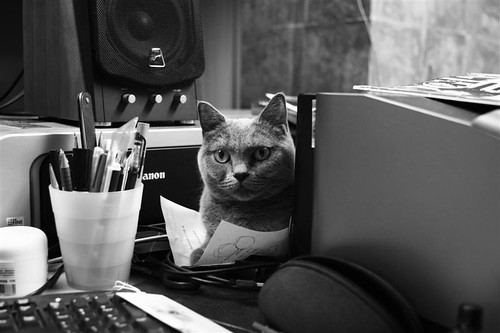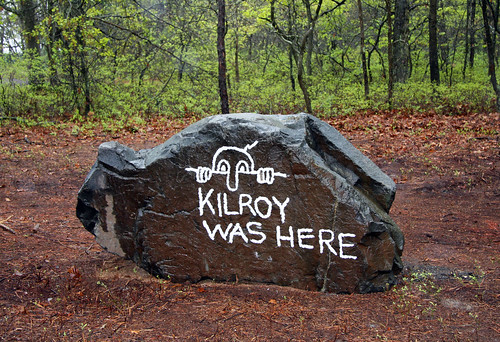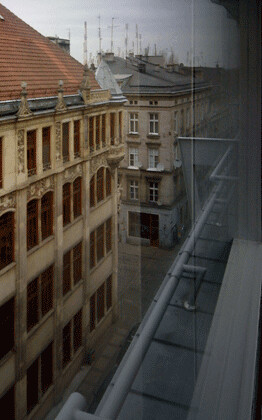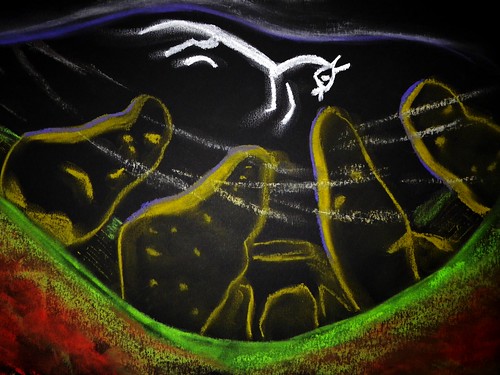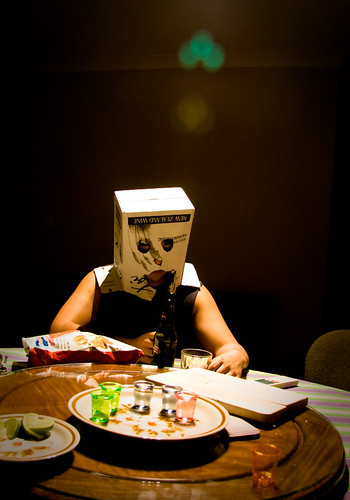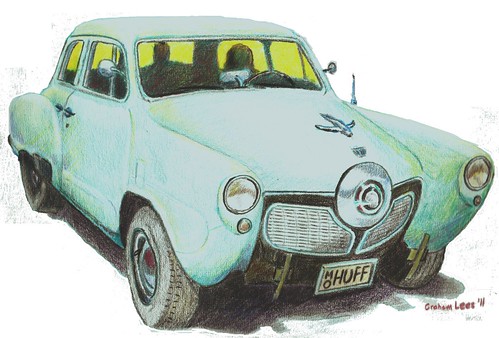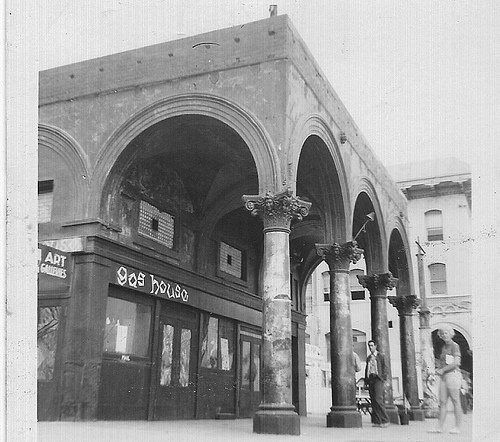WHAT A GREAT PHOTO, AND A GREAT AD FOR CANON.....Thanks to Kloe Kwan for a most creative and unique photograph.
_____________________________________
Untitled by kloekloe
Friday, August 24, 2012
Untitled
Procissão
WHEN I VIEW THIS PAINTING, I FEEL THE warmth and personality of the artist. I can reap a harvest of serenity from this image. My congratulations to Wellington.
_____________________________________
Procissão by Wellington*
Sunday, August 19, 2012
ESSAYS ON THE U.S. & JAPANESE AUTO INDUSTRY AND SOCIALISM -- BY ROBERT L. HUFFSTUTTER
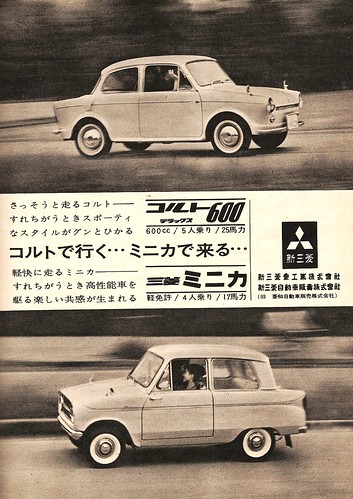
ESSAYS ON THE U.S. & JAPANESE AUTO INDUSTRY AND SOCIALISM -- BY ROBERT L. HUFFSTUTTER, a photo by roberthuffstutter on Flickr.
ESSAYS ON THE U.S. & JAPANESE AUTO INDUSTRY AND SOCIALISM -- BY ROBERT L. HUFFSTUTTER
The history of the Japanese Auto Industry is one that most American citizens will never read. Those who do read the history might find it difficult to understand. Afterall, weren't Fords and Chevy's the standards of the world? Now, America is seeking to regain the world market by tinkering with "green cars" and super-economy cars. It is a total failure. Why? Because the government regulations and EPA are designed to make the American auto industry fail. One cannot have a SOCIALIST NATION with a flourishing auto industry. Remember the success of the Russian auto industry beginning in 1918? How many Skodas do you see on the streets--anywhere in the world? RLH
I recall back in the 50s when Americans chuckled about items labeled "Made in Japan." That was an era when American manufacturing was confident America would always be the major auto maker in the world. Executives rested easy and workers were knocking down up to $8 to $10 per hour. Meanwhile, in a faraway country just recovering from almost total devestation, boardrooms of executives skilled in all facets of engineering, marketing, advertising and design were working around the clock to get their industry out of Christmas decorations into the world's top-selling items--automobiles.
The history of the Japanese Auto Industry is one that most American citizens will never read. Those who do read the history might find it difficult to understand. Afterall, weren't Fords and Chevy's the standards of the world?
Now, America is seeking to regain the world market by tinkering with "green cars" and super-economy cars. It is a total failure.
Why? Because the government regulations and EPA are designed to make the American auto industry fail.
One cannot have a SOCIALIST NATION with a flourishing auto industry. Remember the success of the Russian auto industry beginning in 1918? How many Skodas do you see on the streets--anywhere in the world today?
How many Smarty Pants cars do you think you will see on the streets of America in ten years? How many electrical autos do you think you will see?
Unless America taps the natural gas energy and retools its entire auto industry, America's auto industry will be be buried, RIP, because of cronie politics, Congressional fears and favors and downright scams using American tax dollars
Had Japan not made the mistake of following some of its power-hungry and radical politicians beginning in the early 1930s and concentrated on reasonable trade negotiations instead of militaristic dominance and control through victory in combat, Japan would most likely never have suffered the disasters and crushing defeat of a world war. No, Japan would have most likely gained and won what it wanted through diplomatic means and shrewd business trade.
A nation must study the goals and policies of their leaders carefully lest their nation become a wasteland.
This would be a good lesson for all Americans to remember as November approaches. RLH
Saturday, August 18, 2012
Kilroy Was Here
Kilroy Was Here
The most popular cartoon of the U.S. Soldiers during World War II. Manchester N.J. World War II Veterans Memorial Park. Thank you to all who served.
Kilroy Was Here by chris fotograf
WW2 Newspapers
HEADLINE NEWS, 1940S
WW2 Newspapers
World War II Pacific Theater Headlines of Japanese aggression as shown in newspaper extras. The parachute troops alarm proved to be false, but most of Luzon was overrun by the Japanese very quickly. By plan, the US and Philippine Armies retreated into the Bataan peninsula, but had not stored enough food and supplies to last long against a reinforced enemy. Furthermore, the "plan" called for the US Navy capital ships to come to their rescue/assistance. The ships were at the bottom of Pearl Harbor. In reality, the United States government had "written off" the Philippines as indefensible long before the war ever began; however, the government continued to send hopeful messages to the Philippines, knowing they were not going to fulfill any promises of help. While not entirely at fault, General Walter Short and Admiral Husband Kimmel were blamed for the disaster at Pearl Harbor in order to save the reputations and political careers of CNO Stark, SecNav Knox, and president Roosevelt. Just as unfairly, General Douglas MacArthur gets a lot of the blame for the disaster in the Philippines, but his military career remained intact until the Korean War. Congress and the President were much more culpable than MacArthur, and dreadfully more so than Short and Kimmel.
TEXT BY PATRICK ADAMS, PHOTO BY PATRICK ADAMS
Saturday, August 11, 2012
好久不见
To have a studio beneath any of these rooftops would be a dream. Such a serene masterpiece, beyond words.
好久不见 by cuckooforcocopuffs
Thursday, August 9, 2012
518 (iPhone-sketch)
View from room 518, Sofitel, Wrozław
_____________________________________
518 (iPhone-sketch) by City View King
Wednesday, August 8, 2012
The White Horse Visits Wayland’s Smithy
The White Horse Visits Wayland’s Smithy
The White Horse Visits Wayland’s Smithy
There was a smattering of asteroids and mist.
Chalk hills were indistinguishable from clouds:
Both had their ramparts, curves, flutes and coombes,
Gallops strewn with orchises and stars. The horse
Traversed them both; soil and space were one
To him, tramping the crowns of beech trees,
Clovers, cumulonimbus. He was held aloft
By winds, the hootings of owls, the breath of ravens.
Sheep and sarsens became identical, sleeping
In the fields. There was whinnying above the Smithy,
An uncanny clattering in air, and out of the moth-dank cave
Something came. The anvil rang. Sparks and stars
Were one. The horse shuddered chalk dust, paced,
Grew calm, raised his fetlock for the shoeing.
Poem by Giles Watson, 2012.
_______________________________________
The White Horse Visits... by Giles C. Watson
Monday, August 6, 2012
1951 Studebaker Commando
Earl R Stonebridge sold this classic auto to Rob Huffstutter in the Spring of '58 and the pair of them could often be seen cruising the streets of Kansas City. The bumper bar came off one day while Earl was opening a bottle of Budweiser on it. It was so badly bent that for three weeks they drove around with just the brackets until a replacement could be brought down from Detroit.
That's Rob driving while Earl tells jokes to a young woman in the back seat.
________________________________________
1951 Studebaker Commando by Tram Painter
VENICE BEACH 1960, PHOTO BY R. L. HUFFSTUTTER
SOME THOUGHTS ABOUT THE VENICE BEACH OF 50 YEARS AGO AND WRITING THE "GREAT AMERICAN" NOVEL by R.L.Huffstutter
Let me simply say that when I got off the bus and walked down to Venice West more than 50 years ago, it was a different scene.
I will never forget the thrill of smelling the variety of different foods drifting out of the small delis and cafes. I was fascinated by the elderly, bundled up on the benchs, speaking the language of Eastern Europe. I was fascinated by the women and men in their mid-20s who smiled at me as though they had secrets I knew nothing about but would discover if I remained. They were artists, lovers, musicians, poets, writers, employees of the City, unemployed men and women, fry-cooks, donut bakers, street sweepers, alcoholics who had been hiding out since the Korean War, people with clothing that looked like it was from the 40s, youth like myself who had come to Venice to be cool and get drunk and party all night at the St Marks Hotel and then write poetry about being beat and send post cards back to our friends and tell them to come out and get drunk with us, sun and fun lovers, chicks with bodies that slipped out of the covers of the latest Playboy, guys showing off their abs at Muscle Beach, old people who smiled at everyone and called most everyone their own age by first names.
That was the Venice I arrived in fifty years age--before they tore the cool buildings down, before they poured concrete where bungalows had been, before they razed the old International VIllage with all the cool but closed restauraunts.
Oh', the liquor stores, there were lots of liquor stores. There was one one every corner and they were always running out of muscatel and paper bags. But that is all history now.
Right, it is gone now. And nobody had a lot of time back then for painting names on stuff because people were writing poetry and trying to write the "great American novel" all over again. There were lots of writers who were writers and lots of people who talked about writing. And there was the old Venice West Cafe where there really were poetry readings by candlelight every night. That was so cool-- we could hardly wait to read our own stuff.
The old chairs and tables, the espresso machine, that strong, magic smell of espresso that I have never come across again in fifty years. I can still hear the steam valve hissing and smell the aroma of espresso filling up the entire place. Yes, that was Venice Beach, Venice West by the long-time, old-time beats.
I lived on Paloma Street and I am glad I caught a corner of the beat scene before it was gone forever.
I'm not done with this yet. I will always be writing this novel.
CHAPTER ONE
Venice Beach, California was much different back in 1960.
The population wasn't near what it has become now. The building codes were not an issue. About the only issues that I recall involved the parking situations. Thankfully, most who lived in Venice did not own autos. Since many cars then did not have power steering, it took a lot of strength and ability to judge distance to get in and out of the alleys and parking spots.
Most of the studio apartments were entered from the alley, up the old wooden staircases that were rickety and sometimes shook. One had to be wary of cats dozing or a dog who didn't reckognize the scent of the stair-climber. The alleys were full of delightful aromas of eastern European and Italian dinners being stirred, simmering.
Venice Beach in the 1960s had an air about it that never let one forget the Pacific Ocean was nearby. The gulls have not changed, always either in flight or landing for morsels littered.
Walking through the maze of the Venice alleys was a unique experience. Like any village or town, Venice Beach had an attitude that could change goals and plans. It was a fun place to live and I suppose there are many I passed on my short walks down to the beach who still live there, enjoying the horizon, the smell of the ocean air, friends made throughout the years.
Gone now, I'm sure, are those who immigrated to America who sat on the park benches bundled up speaking Yiddish or some other foreign tongue. Gone too are those elderly gentlemen who were veterans of the first war. Most of the men and women who were adults during the second war are gone now. We call them "the Greatest Generation."
It is like America is suddenly vanishing, or is it just me?
Oh, I am vanishing too, just like the rest of my generation. In a few years, the park benches will all be gone.
CHAPTER TWO
It is as though I hear the voices of the youth drifting up from the surf to tantalize my senses; it is as though I catch a breeze that is carrying a Kosher submarine sandwich combined with the scent of 60s tanning lotion. My olfactatory elements are almost ready to blow a fuse from the intensity of this illusionary scene.
I close my eyes and relax; I doze off briefly only to awake to find a dove looking at me with more curiosity than I care to describe. Several moments pass. The dove's mate lights beside the other.
It is good to have such fond memories. It is good to be alive and able to remember those youthful, joyful days when my eyes met the eyes of many of my peers and generated a lustful wish.
Perhaps, perhaps there is more to lust than one might want to admit, at least publicly, but it is a writer's duty to record the reality of the past and the present.
